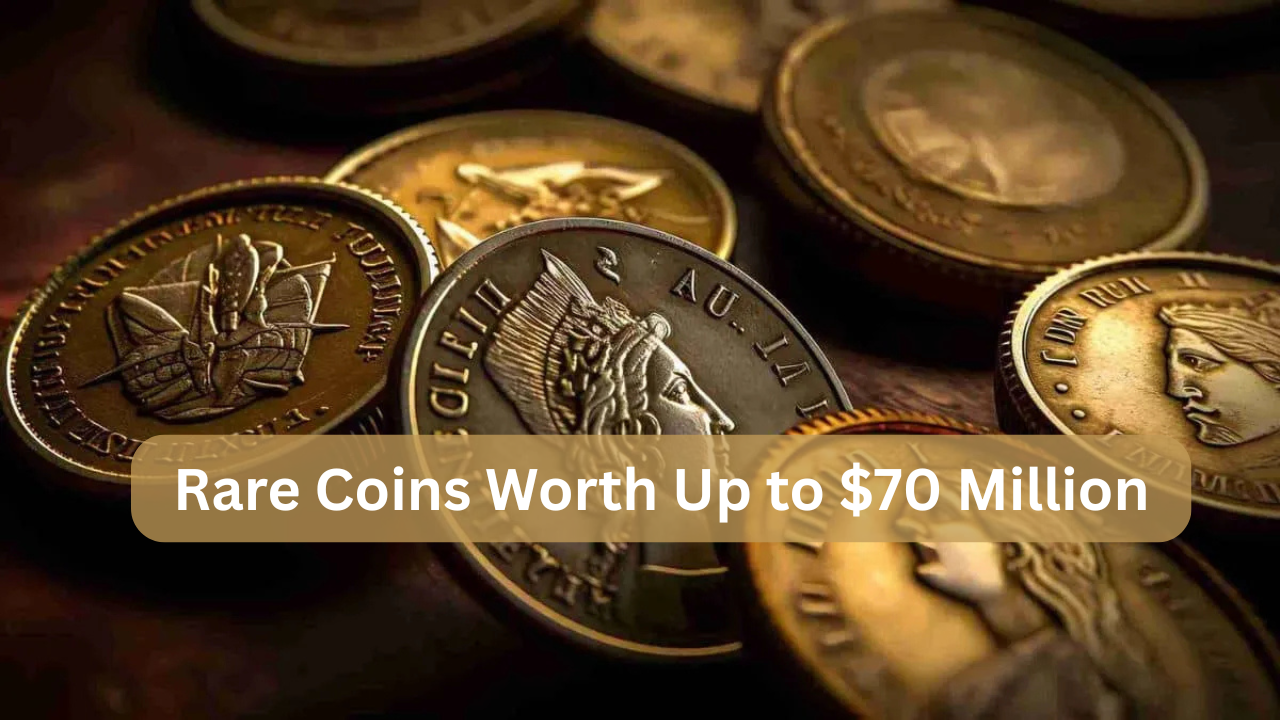Rare Coins a Potential $70 million – Do you ever question whether the spare change in your pocket could be worth a lot of money? Rare coins have been making the headlines for selling for millions at auction, making overnight millionaires out of everyday people. This piece delves into the interesting world of rare coins and how you can potentially happen upon one to be worth an astonishing $70 million.
Rare coins are not mere artifacts of the past; they are symbols of history and milestones in economics. To collectors and enthusiasts, they are valuable in themselves, but to others, they may be treasures waiting to be discovered in a drawer or attic. If you’re interested in coin collecting or want to find your fortune, this guide has everything you need to know.
Rare Coins a Potential $70 million
| Key Data | Details |
|---|---|
| Top Rare Coins | 1794 Flowing Hair Dollar, 1933 Double Eagle, 1894-S Barber Dime |
| Record Sale Price | $18.9 million for the 1933 Double Eagle |
| Coins Still in Circulation | 1943 Bronze Lincoln Cent, 1913 Liberty Head Nickel |
| How to Identify | Mint errors, rare dates, and unique markings |
| Professional Advice | Consult numismatists or reputable dealers for appraisals |
Rare coins are more than just financial worth; they are treasures yet to be uncovered. As a casual hobbyist or budding numismatist, the excitement of discovering a million-dollar coin is just around the corner. Search through your loose change, go to estate sales, or try coin roll hunting to start your treasure hunt today. The payoff could be both informative and life altering.
What Makes a Coin Rare?

Rare coins obtain their value from a mix of factors that combine in a unique way, such as scarcity, historical interest, and state of preservation. Scarcity tends to arise from low mintage or special errors on the manufacturing process. The 1943 Bronze Lincoln Cent, produced during World War II, for instance, is greatly sought after owing to its accidental production in bronze instead of steel.
Collectors value coins, of course. Coins such as the 1794 Flowing Hair Dollar, the first American dollar coin, are prized due to their linkage to America’s origin. The coins symbolize times of ingenuity or evolution, representing key points in coin production. Finally, the grade of a coin, from 1 (Poor) to 70 (Perfect Mint), significantly impacts its price.
Collectors tend to concentrate on a mix of these variables, establishing markets in which even negligible variations of design or minting year can significantly enhance a coin’s value.
Examples of Rare Coins Valued at Millions
- 1933 Double Eagle: Priced at $18.9 million in 2021, the gold coin’s rarity is due to its ban from circulation.
- 1894-S Barber Dime: Only 24 were made, and one such coin might sell for as much as $2 million today.
- 1913 Liberty Head Nickel: Five are known to exist, each worth millions of dollars.
These coins are now legendary among collectors, many selling at auction for prices well in excess of their original value. Some specialize in minting errors, while others are attracted to coins that are associated with landmark historical events, such as the 1943 Steel Cent, made during wartime rationing.
How to Spot Rare Coins a Potential $70 million?
1. Search for Minting Mistakes
Minting mistakes can drive up the price of a coin considerably. Some frequent mistakes are:
- Double dies: A type shows up twice because of a manufacturing error.
- Off-center strikes: Coins are off center at the time of minting.
- No mint mark: Refers to a coin’s exclusive origin, like the 1968 No S Proof Dime.
Mistakes tend to happen during times of economic change or when there is high demand for minting. Coins such as the 1955 Doubled Die Penny illustrate how these production errors can generate collector buzzes.
2. Look for Rare Dates
Coins with particular dates—such as the 1909-S V.D.B. Lincoln Cent—are usually worth more as a result of restricted production. Historical factors, such as war or major occurrences, tend to be a factor in the restricted release of specific coins.
3. Inspect Coin Condition
Use a magnifying glass to examine a coin’s surface for scratches, discoloration, or wear. Higher-grade coins fetch higher prices. Grading standards are rigorous, with professional services like PCGS and NGC offering certification that authenticates and grades coins for collectors.

Where to Search for Rare Coins a potential $70 million?
Rare coins can turn up in surprising places. Here are some practical tips to kickstart your treasure hunt:
1. Your Pocket Change
While unlikely, certain coins such as the 1970-S Small Date Penny may still be awaiting discovery in everyday circulation. Be sure to inspect coins that were minted prior to 1965 closely, as these tend to include precious metals such as silver.
2. Coin Rolls from Banks
Asking for coin rolls from banks will also reveal gems in the form of older pennies, nickels, and dimes. Many collectors utilize “coin roll hunting” as a tactic, hunting for silver dimes or other unique pieces intermingled among contemporary coins.
3. Estate Sales and Auctions
Estate sales will frequently feature collections of coins in mint condition stored for decades. Such collections inherited by family members may occasionally include extremely valuable coins, and such places are veritable hunting grounds for collectors.
4. Metal Detecting
For thrill-seeking collectors, metal detecting at old sites such as battlefields, beaches, or ghost towns has the potential to yield valuable findings. A 1800s gold coin picked up in one such location could be worth a thousand.
What is the most valuable coin ever sold?
The 1933 Double Eagle holds the record at $18.9 million, sold in a Sotheby’s auction in 2021.
Can I still find rare coins in circulation?
Yes, coins like the 1943 Bronze Lincoln Cent or 1969-S Doubled Die Penny could still be found in everyday transactions or bank rolls.
Should I clean my rare coin?
No! Cleaning can damage the surface and significantly reduce the coin’s value. It’s best to leave it in its original state.

